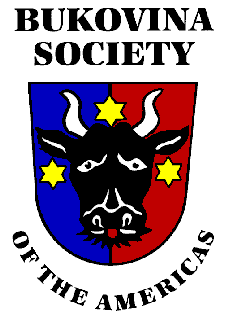 ELLIS — The Bukovina Society of the Americas, headquartered in Ellis, will have a ribbon cutting and free open house at their museum on Friday, Sept. 8, located in the former First Congregational Church building, now the Ellis Arts and Historical Society.
ELLIS — The Bukovina Society of the Americas, headquartered in Ellis, will have a ribbon cutting and free open house at their museum on Friday, Sept. 8, located in the former First Congregational Church building, now the Ellis Arts and Historical Society.
Scheduled for 10 a.m. and sponsored by the Ellis Chamber of Commerce, it marks the 25th anniversary since establishment of the museum when a ribbon cutting ceremony was also conducted. The event also celebrates the recent remodeling and renewal of exhibits.
The Bukovina Society was founded in 1989 and was generously given use of the upper floor of the former First Congregational Church by the Ellis Arts and Historical Society trustees, chaired by the late Jack Nicholson. The Bukovina Society headquarters room and the adjoining chapel have been the site of numerous conventions of the Bukovina German descendants whose ancestors emigrated to Ellis beginning in 1886. In the first few years of conventions, there were several immigrants attending who came to America from Bukovina in the early 1900s.
The museum will be open and free to the public after the ribbon cutting. A wall in the main room features a historical photo archive and the museum contains a collection of artifacts including clothing, farm tools, books, musical instruments, and memorabilia of the Bukovina Germans. Also on display for the morning will be an exhibit of the “turned wood” collection of local artist Kenneth Eberle who will be present to describe his hobby and years of work. A second special display will feature photos and memorabilia of Bukovina Germans in the two world wars. Larry Menestrina, Wichita, has collected materials from the history of his family and other soldiers in the military of those two eras.
The museum re-dedication is part of Bukovinafest 2017 to be held that evening and Saturday, September 9th which, except for meals, will also be free. Six presentations on Saturday will combine the academic and cultural history of the Bukovina Germans. Speakers are from Germany, University of Kansas, and other regional authorities. A program request is available by email from Bukovina Society president Oren Windholz at [email protected] or by phone at 785.625.9492.
The accompanying image is the symbol of all Bukovina historical organizations worldwide. It was the coat of arms of the former Bukovina homeland, a duchy in the Austrian Empire from 1775 to 1918, then absorbed by Ukraine and Romania resulting from the First World War. The coat of arms depicts an aurochs, an extinct wild European ox. The emigration to the Eastern-most crown lands of the Austrian Empire was similar to the Volga German emigration to Russia. The heads of both empires recruited ethnic Germans to settle and develop untamed lands. However, while the Volga Germans lived in a large swath of purely ethnic German villages, Bukovina was multi-cultural, many from the Bohemian Forest of Austria.
— Submitted
